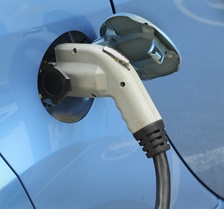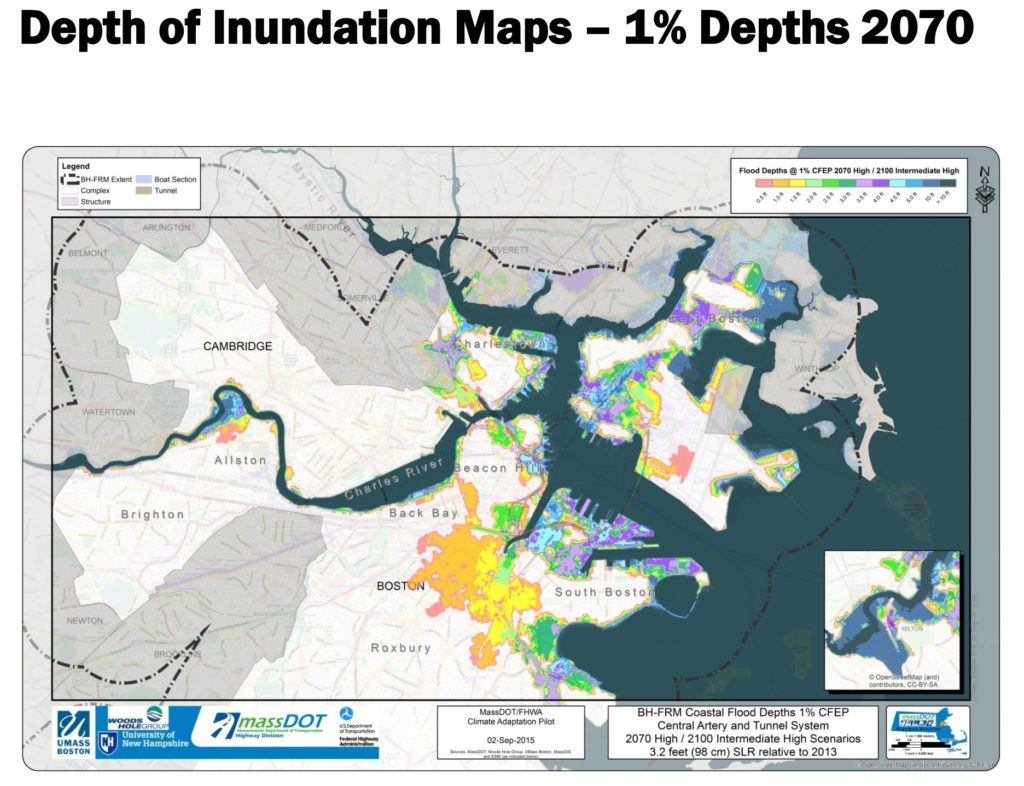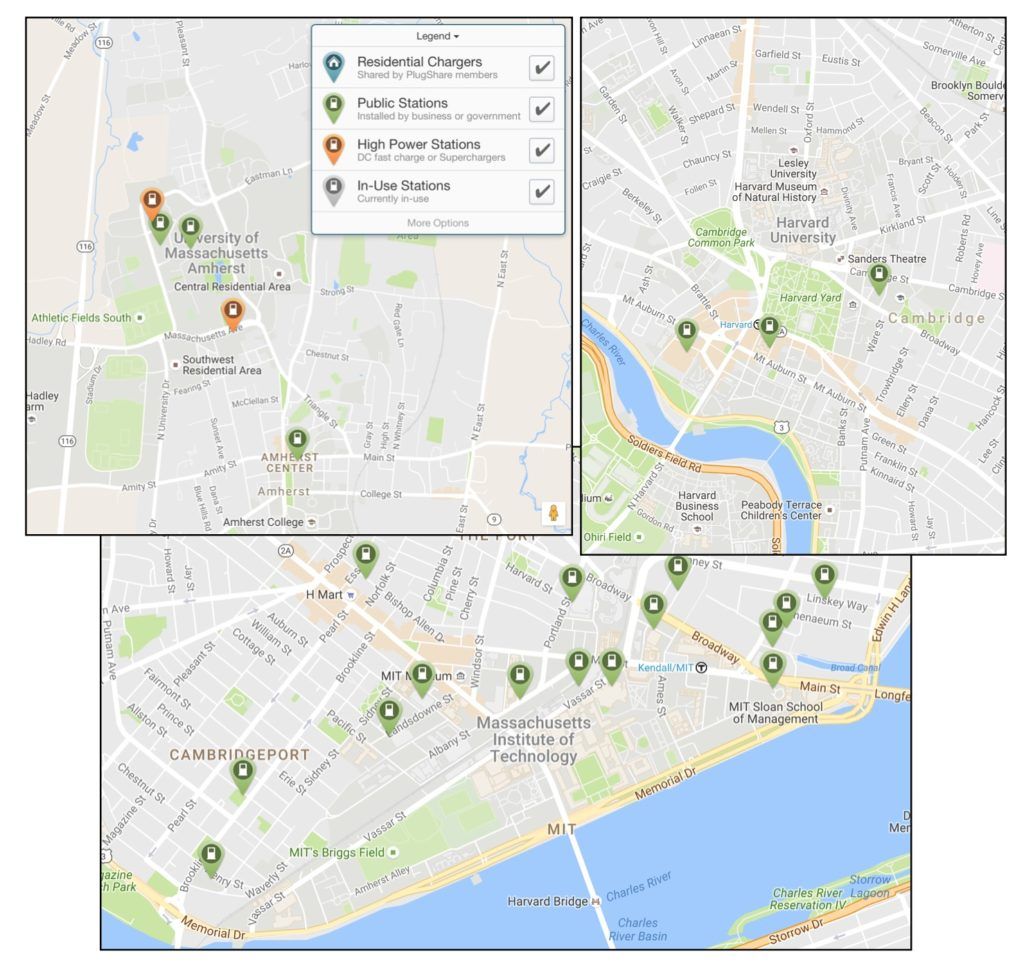How Should Harvard University Lead Efforts to Mitigate Climate Change

How should Harvard University, the leading academic institution, fight against climate change?
Harvard University (University), located in Cambridge, and Boston, Massachusetts, will be significantly impacted by climate change.
Cambridge has an average elevation of 30 feet, while Boston is at 20 feet.[1] They are both increasingly vulnerable to flooding and sea level rise. Although University campuses are not located at the lowest areas, rising sea level will first impact the normal operations of the host cities. According to Cambridge government released projection, by 2070, part of Harvard Sq and Allston Campus are vulnerable to flooding.[2]
image source [2]
According to different sea level rise models, by 2050, sea level may rise by roughly 1 feet (0.3 meter). This would mean most of Harvard Business School and some of the University campus will be highly vulnerable to storm and hurricane surge.[3] By 2100, the sea level may rise by 2 feet (0.6 meter).
Adaptation to climate change would be difficult and expensive. Flooding, which may cause severe property damage, and stronger blizzards, which typically happen during January to February months while school is in session, will increasingly disrupt the school schedule in the decades to come.
In addition to the impact to facilities, the university will have to increasingly consider hardships endured by applicants who were negatively impacted by climate change during its admission process. It does not appear that such mechanisms are in place. Potential mitigation strategies could include special scholarships to areas most severely impacted by climate change, extended application deadline for areas impacted by severe weather events, etc.
University has an office and initiative towards sustainability, focusing on reduce emission, waste, and increase energy efficiency. Based on the latest report, University may not be on track to achieve many of the goals set for 2016, such as 30% reduction in emission.[4]
 To help decrease emission, University plans to increase the efficiency of its shuttles and fleet. University has installed electric car charging stations in many parking garages, but usually only 2 stations at each equipped location. These charging stations are Level 2 chargers, which is inexpensive to install (~$500-1000 for the hardware) but relatively low powered. As an EV driver (Nissan Leaf), I personally applaud the University for installing charging stations on campus. However, compared to many other universities that provide charging stations, the University is lagging behind on several aspects. First, there is no charging stations available to the public. Second, these charging stations are not networked, therefore are not shown in PlugShare. In contrast, MIT charging stations are all ChargePoint and internet-connected. University of Massachusetts, Amherst provides networked Level 3 quick charge stations. In 2016 and 2017, a lot of new electric cars will be released with better affordability and longer range.[5] The University should consider significantly increasing its EV charging infrastructure to encourage adoption of EVs. The city of Somerville provides a few free charging stations and free parking for electric cars, while city of Cambridge provides about the same amount but at $1.50/hr rate plus parking cost. Boston also has a few public charging stations that do not charge for electricity. Therefore, the University is not doing enough to mitigate emission from one of the major source, cars.
To help decrease emission, University plans to increase the efficiency of its shuttles and fleet. University has installed electric car charging stations in many parking garages, but usually only 2 stations at each equipped location. These charging stations are Level 2 chargers, which is inexpensive to install (~$500-1000 for the hardware) but relatively low powered. As an EV driver (Nissan Leaf), I personally applaud the University for installing charging stations on campus. However, compared to many other universities that provide charging stations, the University is lagging behind on several aspects. First, there is no charging stations available to the public. Second, these charging stations are not networked, therefore are not shown in PlugShare. In contrast, MIT charging stations are all ChargePoint and internet-connected. University of Massachusetts, Amherst provides networked Level 3 quick charge stations. In 2016 and 2017, a lot of new electric cars will be released with better affordability and longer range.[5] The University should consider significantly increasing its EV charging infrastructure to encourage adoption of EVs. The city of Somerville provides a few free charging stations and free parking for electric cars, while city of Cambridge provides about the same amount but at $1.50/hr rate plus parking cost. Boston also has a few public charging stations that do not charge for electricity. Therefore, the University is not doing enough to mitigate emission from one of the major source, cars.
image credit: plugshare.com [6]
University has declined to divest the endowment from fossil fuel industry,[7] despite pressure and protests from students. Comparatively, Stanford University has decided to divest from coal.[8]
University, as a leader in many areas, can do a lot more to help mitigate the impact of climate change. University recently started “living laboratory”, a collaboration between Office of Sustainability and Harvard Chan School of Public Health. The goal is to “use campus spaces to inform public health research and apply the findings in capital projects and renovations.”[9] I believe this is a great start and a testbed for innovations which may also help University mitigate risks for itself. University should continue to expand “living laboratory”, which may produce technologies for startups that may become pioneers in green tech industry.
University should consider working with the city of Cambridge to improve public EV charging infrastructure and increase charging stations on campus. Parking Services should strictly enforce parking violations where regular car parked in charging station slots.
University needs to do more with its endowment to align with the goal of mitigating climate change. This is not just a financial issue. Younger generations are increasingly voting with their wallet. If University continues to lag behind, the brand equity will be damaged among prospective students in general. Given that students who are passionate about climate change will be less likely to join University if the endowment is still benefiting from fossil fuel industry, in the long run the University may struggle to attract future “green innovators”.
Word count: 776
[1] city-data.com. 2016. Cambridge, Massachusetts (MA) Profiles. [ONLINE] Available at: http://www.city-data.com/city/Cambridge-Massachusetts.html. [Accessed 3 November 2016].
[2] City of Cambridge. 2015. City of Cambridge Climate Change Vulnerability Assessment. [ONLINE] Available at: http://www.cambridgema.gov/CDD/Projects/Climate/~/media/3F55DEA5040E4C45A99A83EDBFE6F240.ashx. [Accessed 3 November 2016].
[3] Sasaki Intern Charette. 2013. Sea Level Rise: Boston. [ONLINE] Available at: https://issuu.com/sasakiassociates/docs/master_book_executive_summary_for_i?e=3017900/4499564. [Accessed 3 November 2016].
[4] Harvard University Office of Sustainability. 2016. Sustainability at Harvard Impact Report. [ONLINE] Available at: http://report.green.harvard.edu. [Accessed 3 November 2016].
[5] Inside EVs. 2016. Inside EVs: Electric Vehicle News, Reviews, and Reports. [ONLINE] Available at: http://insideevs.com. [Accessed 4 November 2016].
[6] PlugShare.com. 2016. PlugShare: EV Charging Station Map – Find a place to charge your car!. [ONLINE] Available at: http://www.plugshare.com. [Accessed 4 November 2016].
[7] Harvard University. 2016. Fossil Fuel Divestment Statement | Harvard University. [ONLINE] Available at: http://www.harvard.edu/president/news/2013/fossil-fuel-divestment-statement. [Accessed 04 November 2016].
[8] Stanford University. 2016. Stanford to divest from coal companies. [ONLINE] Available at: http://news.stanford.edu/news/2014/may/divest-coal-trustees-050714.html. [Accessed 04 November 2016].
[9] Harvard Gazette. 2016. Harvard strengthens ‘living laboratory’ to help mitigate climate impact | Harvard Gazette. [ONLINE] Available at: http://news.harvard.edu/gazette/story/2016/10/harvard-strengthens-living-laboratory-to-help-mitigate-climate-impact/. [Accessed 04 November 2016].






Thank you for challenging Harvard to do more! I cannot even count the number of times I have thought to myself, Why are wasting so many resources? In addition to the points mentioned in your article, I also think that we are extremely liberal with our use of paper; Our use of electricity; Our use of disposables. Now there is some probability everything here may all be “recyclable”, “renewable” and “compostable” (quite unlikely). But it does get us used to a lifestyle where we stop questioning the abundance of resources. A simple example – I was quite surprised to find that my HUH apartment was not insulated. Of course there is unlimited heating to keep me warm but I challenge them on their suggestions that I “arrange large furniture against outside walls to provide insulation against infiltration of cold air”!
I appreciate your analysis of an organization with are interacting with in a daily-basis. I did not know, for example, that the university have electric cars charging stations.
Nevertheless, I feel that Harvard University is doing mostly mitigation actions, instead (or in addition to) adaptation initiatives to fight climate change. In this regards, is interesting to think about the University’s perspective if faculty or students are affected by climate change implications. For example, is the university willing to flexibilize their policies if a student can no arrive to classes because of flooding / hurricanes /storms? What happen if a prospective student cannot attend to its interview for the same reasons?
Additionally, I am interesting to learn about how the University approach the construction of new buildings. Is the university thinking about the impact on climate change of the multiple new buildings that they build every year? Are they developing buildings resistant to the impact of climate change (ex. what happen to the HBS tunnels in case of flooding?).
As a comparison point, when MIT Sloan built there new MBA Building, they were concerned about developing a sustainable and eco-friendly building (for instance the floor is made from crushed brown and green beer bottles [1]). In their own words, E62 building is the greenest of MIT, “showcasing sustainable features such as light-sensitive window shades, a green roof, and an irrigation system that minimizes water use by responding to changes in weather”.[2]
[1] About E62 – MIT Sloan Building the Future. 2016. About E62 – MIT Sloan Building the Future. [ONLINE] Available at: http://mitsloan.mit.edu/buildingthefuture/pdf/MITSloan-SelfGuidedTour.pdf
[2] About E62 – MIT Sloan Building the Future. 2016. About E62 – MIT Sloan Building the Future. [ONLINE] Available at: http://mitsloan.mit.edu/buildingthefuture/about-e62.php. [Accessed 07 November 2016].
There was a recent Crimson article on that general topic – the first such coverage of expected impacts to campuses that I’m aware of:
http://www.thecrimson.com/article/2016/12/14/harvard-prepares-for-effects-of-climate-change/
Jeremy – It is great that you shed some light on the controversial practices of our University. I was particularly interested in your point on the Harvard University Endowment’s decision to not divest its interests in organizations that benefit from the use of Fossil Fuels. One point that you may not have considered is Harvard Management Company’s (HMC, the endowment) campaign to promote sustainable investment in Natural Resources. One example of this is since 2005, HMC has been responsible for planting over 100 million trees in multiple countries and setting aside 300,000 acres of land for conservation purposes. The impact of this investment in the environment is estimated to sequester 2.5 million tons of carbon dioxide each year. Also HMC (like Ikea) requires its investment in timberland properties to be approved by the Forest Stewardship Council (FSC), the leading social and environmental certification standard for forestry [1]. Although this may not completely offset the impact of its questionable investment practices in regards to fossil fuels, it is encouraging to see HMC focus on its impact through environmental, social, and governance factors.
1. Harvard Management Company, Sustainable Investment in Natural Resources
http://www.hmc.harvard.edu/investment-management/natural_resources_investments.html
There’s much more to the whole story of Harvard’s tree-plantation empire than you’re going to know about from reading Harvard Management Company’s PR. In Argentina and Chile, there have been protests about failure to consult with local residents prior to going forward with acquisitions and development (consultation being a primary human-rights principle for responsible business); also, about social and environmental impacts. In Romania, a contracted manager engaged in corrupt transactions which led to arrests of him and his wife, subsequent to which Harvard sold all of its holdings there.
One could ask what was growing previously where Harvard’s plantations were installed in Brazil and elsewhere, but that information is not available, because as with most of Harvard Management Company’s operations, there is zero transparency other than as is legally required by SEC, IRS, and the state Division of Charities. Natural resources did very poorly during the last year, and those who oversaw such holdings have departed, so it’s quite possible that tracts of trees will be sold off. Note that Harvard Management Company’s Vice President for Sustainability Jameela Pedicini also departed over a year ago, and she has not been replaced.
https://web.archive.org/web/20130616160032/http://responsibleharvard.com/
Jeremy – Thank you for such a thoughtful post on the extent that Harvard, as a leading educational institutional, should be an active leader in climate change mitigation efforts. I would like to focus on two points you raised in your post: the University’s electric car initiative and the endowment’s divestiture of investments in the fossil fuel industry. With respect to electric cars, while the University’s effort to make electric power sources more widely available is admirable, the extent to which electric cars are actually less carbon intensive is under debate. If you consider the lifetime carbon footprint (manufacturing, driving and disposal) of both electric and gasoline-powered cars, the carbon footprint may actually be higher for electric cars. (See https://www.prageru.com/courses/environmental-science/are-electric-cars-really-green) Electric cars are more carbon-intensive to produce and often times the electricity used to fuel these cars is coal-generated. With respect to the University’s divestiture of fossil fuel investments, I previously worked with various pension funds/endowments to help them diligence our private equity funds. Often times endowments/pension funds would have various restrictions related to social enterprise/diversity, and while these restrictions were well meaning, it often meant that the incentives of these pension funds were distorted and they were no longer investing in the most profitable investments. Therefore, the beneficiaries of these fund’s investments sometimes suffered. I worry that the result will be similar with Harvard’s endowment, and perhaps the investment criteria of the endowment is not the right place for climate change advocacy.
Bjorn Lomborg is infamous for his willful misrepresentations of fact. There’s a whole website dedicated to documenting that, and Googling “criticism of Bjorn Lomborg” will give phenomenal amounts of additional such material. As regards electric cars, his assertion about the percentage of electrical production likely to come from renewables over coming decades is way off-base, given that states such as New York, Massachusetts and California have committed to much higher goals, and costs of both wind and solar energy are dropping rapidly. The continued reliance on coal is the whole basis of his argument, but coal plants are closing or being converted to gas in droves, mainly because pricing is no longer competitive.
http://www.lomborg-errors.dk/
See Clean Yield for a statement about their track record with fossil-free investing. Harvard Management Company could certainly do better than its recent pathetic performance without continuing to profit from companies which have failed to take responsibility for the catastrophic consequences of their products’ usages.
http://www.cleanyield.com/why-clean-yield/fossil-fuel-free-investing/
Boston actually ranges from zero to 50 feet above sea level – the “20 feet” is an average. Thus, many areas are very susceptible to flooding with combinations of sea-level rise, high tides and storm surges which are in total far lesser than 20 feet. The same holds true for the somewhat higher elevations in Cambridge. Zones such as the Business School campus, the River House dormitories and the Kennedy School are especially vulnerable.
http://www.datapointed.net/visualizations/maps/above-sea-level/boston-massachusetts/